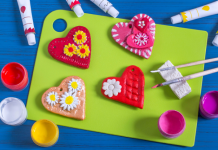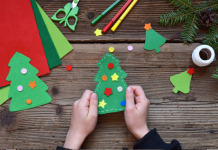Science Fair Projects are fun ways of learning science and a great way to establish an interest in the child towards science from an early age. Proper care must be taken by both parents and teachers to ensure that the kid not only does the science experiment, but he or she understands something from that very experiment and learns about science. Science can be so much fun and there are innumerable experiments which can give an eyebrow raising experience for kids.
Here we will be discussing some of the science experiments that your child could take up. These science fair project ideas can range from simple science experiments to complex science experiments (in terms of a preschooler).
Science Fair Project Ideas for Preschoolers
Some of the science fair project ideas or experiments include
The Human Body: One of the very simple science fair projects that a child can take up is the Human Body. In simple terms, your child can show the various organs that make up the human body. For example, the eyes, nose, mouth, tongue, ears, hands and legs, etc. An d of course, the arrangements of inner organs such as the lungs, heart, the digestive system, the brain, etc can also be shown. A pictorial representation and their uses can be one simple and good project idea.

Source: Toys R Us.com
Importance of Washing Hands: We all tell our kids to wash their hands before and after eating anything. This is because to avoid infections and diseases causing germs. This itself can be another very good project idea for science fair. You can encourage your kid to highlight the advantages of hand wash and what can happen when you eat without washing hands properly.

Source: Once Upon A Penguin.com
Mixing Colors: What is the best way to keep your kid interested in the science project? Well, colors might just be the answer. Perhaps there are no kids who dislike colors and it might be one of the best ways for kids to have fun and work on their science experiment at the same time. You can encourage your kid to take up a science experiment which describes about colors and the combination of colors. As mixing of primary colors yields secondary colors, it is a viable and yet simple project where your kid could demonstrate which primary colors can yield secondary colors, etc.

Source: We Made That.com
Volcano Demonstration: This is perhaps one of the most experimented science fair project for kids and still many kids love to watch the volcano erupt. And is it hard to make this stuff? No, not all. All it takes is two simple things at home which can create this volcano effect. One is baking soda (not to be mistaken with baking powder) and the other is vinegar. As baking soda or sodium bicarbonate is a base and vinegar is an acid, mixing both together causes a chemical reaction which releases water and carbon dioxide. For an extra effect, you could add orange color to vinegar to make the volcano as realistic as possible.

Source: Washington Post.com
Balloons Experiment: Who wouldn’t like balloons, especially kids? Kids love to play with balloons, for as long as it takes. They never get tired of playing with balloons. And one good way of demonstrating science is with balloons. Take balloons filled with air and helium and demonstrate the kids, how different these two types of balloons are and the kids will be amazed.

Source: Serving Pink Lemonade.com
Balancing Weights: This is another experiment that kids would very much like to see. As kids have an experience playing see-saw and they know that it is very difficult to strike balance with two kids playing that game. You could demonstrate this by making a simple balance beam and different weights hanging on each side.

Source: Fun Family Crafts.com
Different states of matter: This is another science fair experiment that can be easily done. You collect different things that represent different states of matter including solid, liquid and gas. You could collect things such as pebbles, water, balloons filled with air. Apart from these simple things, you could also demonstrate the different states in which water exists such as ice, liquid water and water vapour.

Source: Lesson Plants To Pots and Pans.com
The Solar System: This is another interesting model that you could encourage your kid to try. Apparently, its not so difficult to make one. You can find the things you’ll need in a dollar store. You’ll have to find foam balls of different sizes that can be pierced for hanging. You’ll have to buy 1 large ball representing the sun and for Jupiter and Saturn, you’ll need to find balls of the next size, followed by Uranus and Neptune, followed by the other planets like Earth, Venus, Mars, Mercury and of course the Moon as well. Don’t forget to color the planets.
Source: Pics To Pin.com
Paper Cup Phone: We all have tried this at least once in our childhood and must’ve wondered how can this thing work? Put it simply, some kids might’ve wondered, if this is all it takes, then why do we have to buy a real phone? You could encourage your kids to make such a phone with paper cups. All you need are two paper cups and a large piece of string. The string must be tied to each of the paper cup’s base and it should be taut. Its not magic that’s working here, but its sound waves and vibrations that are working here.
Source: News.Harvard.edu
Plants That Provide Staple Food: Another science fair project idea is about the plants that provide us with our staple food which include corn, wheat, rice, oats and quinoa. The introduction of these plants at an early age is important because of the fact that in the recent times, some kids are under the impression that supermarkets is the place of origin of our food.
Source: Rancho Murieta.com
Photosynthesis: Now that we’ve showcased plants, wouldn’t it be nice if we also talked about a project that demonstrates how plants make their food? We all know that plants make their food with the help of sunlight, the process which is known as photosynthesis. Our kids also need to know that all the animals on this planet including humans are dependent on plants because our food comes from plants and they make their food from the sunlight that they receive. This information can creates a positive attitude towards plants.
Source: Child Parenting About.com
Fossilize Your Hand and Foot Prints: This is another cool project for your kids. All you need is simple playing clay, a medium sized tray and color. If playing clay or play dough is not available, you could use wheat flour to make some dough. Make sure that the dough has the same consistency of play dough. You could also add some color while preparing the dough. The next step is to take hand or foot impressions.
Source: The Imagination Tree.com
How to Make an Egg Float on Water: Here’s a project that talks about density of the stuff around us. Most of us know that eggs don’t usually float on water, but you could make them float on water. This is not another magic trick, but simple science. All you need to do is to add salt to the water to make it denser. If you have a tumbler with 1 glass of water, then, you should add at least 6 tablespoons of salt so that the water becomes dense enough to let the egg float.
Source: Blogging Mama.com
Egg Dipped in Vinegar: Here’s another experiment with an egg that demonstrates how acidic vinegar is. All you need to do is to take an egg and dip it in a glass of vinegar. The acidity of vinegar is such that it can dissolve the outer shell of calcium to such an extent that the hard shell actually becomes soft and translucent in some sense. It takes about 2 days for the vinegar to take its action completely.
Source: Honey Bee Books Blog.blogspot.com
Tornado Inside a Bottle: We’ve all seen giant tornadoes sweeping across towns and farms, at least on TVs, but this time make your own tornado, a min tornado inside a bottle. All you need are two 1 ltr pet bottles. Fill one bottle completely with water and put the other bottle on top of the 1st bottle, mouth first. The mouths of both bottles must be stuck together. You can do this my gluing together the caps of the bottles and punching a hole through them. Now fit the bottles carefully on each side and reverse the bottle. Now, the water from the top bottle forces its way to the bottle at the bottom with a force that it creates a tornado effect.
Source: Steve Spangler.com
Taste Without Smell: This is another good science experiment that you might want to try. All you need are few fruits and vegetables such as apples, onions, potatoes, etc. Now while experimenting, make sure that the noses and eyes of the volunteers are closed. Now, record the reactions of the volunteers after they come to know what they’ve eaten without smelling them.
Source: Net Places.com
Invisible Ink: This science experiment sounds tricky but it isn’t. In fact, it is one of the easiest experiments that you can do. All you needs is half a piece of lemon, water, cotton and a white paper. For a tablespoon of lemon juice add another tablespoon of water and mix it quite well. Now, dip a piece of cotton in the lemon juice and write something on a piece of paper. Let the paper dry off and when you want to read it, keep the paper on top of an incandescent light bulb or a candle and the message on the paper will be revealed. This is because, lemon juice is organic and when it is heated up, it oxidizes, making it darker and grey.
Source: Lady Astrid’s Laboratory.com
Mini Parachute: A parachute is a simple science project that can demonstrate how to slow down something that is falling from a distance. It can also demonstrate how wind can actually help a falling object to slow down. For a parachute, all you need is a plastic bag, scissors, a spool of string and a small weight to be hanged to the parachute chords. You could preferably use a very small action figure or a toy. Make sure the plastic bag or sheet is large enough, because you need to cut it down to a certain shape. First, you need to cut it into a square shape and then cut the edges to make an octagon (an eight sided shape). Make small holes near each of the eight sides and tie pieces of string to these holes. The size of all the pieces of string must be equal. Now, tie down the weight to the other side or you could simply tie these strings to a ring large enough to fit the weight, in this case the toy. You could easily slide the toy through the ring. And your mini parachute is ready.
Source: Parent Map.com
Make a Rainbow on a Sunny Day: Here’s a simple experiment that you could which can make a rainbow on a sunny day. All you need is a light source, a prism and a large sheet of paper or a canvas. Place the canvas vertically on a board using tacks or tape. Now hold the prism and shine light so that it passes through the prism and the colors of the rainbow are revealed. What is actually happening is that light comprises of different colors and when it passes through something like a prism, it splits these colors to form the colors of the rainbow.
Source: Avrotor.blogspot.com
Lemon Battery: This is another science experiment that can be very exciting for kids. All you need for this project are a couple of lemons, wires and electrodes that need to be inserted into the lemons and a small LED bulb or a multimeter. For the electrodes you should use pieces of zinc and copper that can be found at home. This way you can be sure of the positive and negative sides. Use a bunch of lemons for this experiment. Connect these wires in a series connection and connect the ends to an LED bulb to light it up. A single lemon can yield up to one volt.
Source: YouTube.com

























